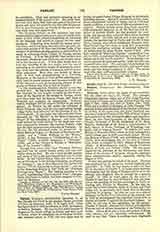

Farnese, ALESSANDRO, the name of two cardinals. For the elder see Pope Paul III. The younger, Alessandro Farnese, eldest son of Pier Luigi Farnese, first Duke of Parma and brother of Pope Paul III, was born October 7, 1520, and died at Rome, February, 1589. While yet a student at Bologna, in 1534, Clement VII appointed him administrator of the Diocese of Parma; on December 18 of the same year, his uncle, Paul III, created him Cardinal-Deacon of the Title of Sant’ Angelo, and conferred on him numerous offices and benefices. Thus, he was Vice-Chancellor of the Holy Roman Church, Governor of Tivoli, Archpriest of St. Mary Major’s, Archpriest of St. Peter’s, Administrator of Jaen, Spain, of Vizeu, Portugal, of Würzburg, Germany, and of Avignon, France. In 1536 he was made Bishop of Monreale, Sicily, where, in 1552, he founded a Jesuit College, and, in 1559, convoked a synod. He was also Bishop of Massa (1538), and Archbishop of Tours (1553), later exchanging this see for that of Cahors, from which he resigned in 1557; Bishop of Benevento (1556); of Montefiascone (1571); finally Cardinal–Bishop of Ostia and Velletri (1580). He was papal legate for the province of the Patrimony, and afterwards of the county of Avignon, where he displayed great administrative ability, especially during the plague of 1541.
He was very zealous in behalf of the poor. Farnese was employed by the popes on various legations and embassies. In 1539, he was legatus a latere of Paul III at the court of Charles V, to make peace between the emperor and the King of France, and to sever the alliance with England, also to arrange for a general council. In 1543 he went again to the court of Charles V, and later to that of Francis I, present at the meeting of the two sovereigns in Paris, returning with Charles to Flanders. In the war between Julius III, he prudently held aloof, first at Florence and then at Avignon. In 1545 he went on a second embassy to Charles V in reference to the council, and in 1546 he accompanied the pontifical troops sent to the aid of Charles Y against the Smalkaid League. In 1580, he was one of the candidates for the papacy. Charles V greatly admired his virtues and sagacity. Farnese was an ardent promoter of the Tridentine reforms. Above all he was a lover and patron of literature, science, and art, especially ecclesiastical. He used to say that “there is nothing more despicable than a cowardly soldier or an ignorant priest”. He patronized the architect Vignolo, to whom he entrusted the construction both of the church of the Gesil in Rome, of which he laid the cornerstone in 1568, and of the superb Farnese palace of Caprarola near Lago Bracciano. He restored the monastery of Tre Fontane, where he had the chapel of Santa Maria Scala Coeli erected; and he had the ceiling of San Lorenzo in Damaso magnificently decorated. He was buried in front of the high altar in the church of the Gesù.
U. BENIGNI

